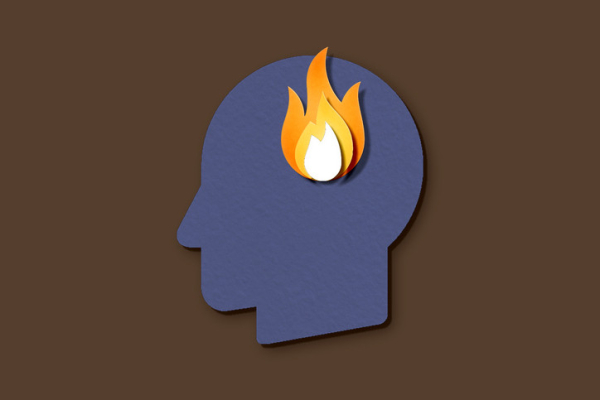
When you’re low on energy, is it worth trying yerba mate, yaupon tea, matcha, and other beverages invading the coffee and tea space that promise similar energy perks and health benefits? Often marketed as wellness drinks, coffee alternatives like these are trending, according to the International Food Information Council.
So, how do a few popular alternatives stack up nutritionally? Do they rely on caffeine for an energy boost? Do they contain potentially healthy (or unhealthy) plant compounds?
The basics on coffee and tea
According to a National Coffee Association survey, 70% of American adults drink coffee, and 62% of those do so daily. Observational studies have linked compounds in coffee beans called polyphenols and antioxidants with health benefits, including a lower risk of type 2 diabetes, heart disease, and neurodegenerative disorders such as Parkinson’s and Alzheimer’s disease. Yet most of us probably don’t drink it for those reasons.
Coffee aficionados enjoy a caffeine energy boost that improves clarity and focus, and savor its fragrance and rich, deep flavor. Still, not everyone is a fan: caffeine makes some people feel jittery, and the caffeine and acidity can irritate sensitive stomachs.
Coffee’s cousin, tea, is the second most popular beverage globally behind water, and is enjoyed by a third of Americans. Most types of tea contain about half the caffeine of coffee (herbal teas have little to none) with less acidity. Tea contains health-promoting antioxidant compounds, such as flavanols.
Caffeine comparison: 8 ounces of brewed coffee contains about 95 mg caffeine; instant coffee about 60 mg; black tea about 47 mg; and green tea about 28 mg.
What to know about yerba mate
Yerba mate (or mate) is an herbal tea from the Ilex paraguariensis tree in South America that has an earthy and more bitter flavor than other teas. It contains antioxidant polyphenols like chlorogenic acid, plus as much caffeine as coffee or more (80 to 175 mg per cup). Preliminary research suggests it might promote weight loss and lower blood cholesterol, but studies are inconclusive. Users report less fatigue and better focus — likely from its caffeine content — but without jitteriness.
Downside: Certain processing methods of mate, such as drying the leaves with smoke, may introduce polycyclic aromatic hydrocarbons — the same carcinogenic substances that are found in grilled meats. Some research links drinking large amounts of mate over time with increased risk of certain cancers, including head and neck, stomach, bladder, and lung. However, unsmoked mate (which is processed by air drying) may be safer.
What to know about yaupon tea
Like mate, yaupon is an herbal tea. Native to the US, it has a mellow grassy flavor similar to green tea. It contains chlorogenic acid and antioxidants that are purported to decrease inflammation and boost energy. This tea has 60 mg caffeine per cup and also provides theobromine, a compound structurally similar to caffeine found in cocoa beans and many teas. Theobromine increases blood flow and may increase energy and alertness, but this boost is slower to start and lasts longer than caffeine, which provides a quick but short-lived boost.
Downside: The combination of theobromine and caffeine may increase heart rate and interfere with sleep, especially if you drink a large amount of yaupon or sip it too close to bedtime.
What to know about matcha tea
Matcha comes from the same Camellia sinensis plant as green tea. However, unlike green tea, matcha is grown in the shade, which protects it from sunlight and oxidation and contributes to its bright green color and higher polyphenol content. Whole tea leaves and stems of matcha are ground into a fine powder, which is then whisked with hot water or milk. Matcha contains about 40 to 175 mg caffeine per cup and has the same antioxidant polyphenols as green tea, specifically theanine and catechins. However, because whole leaves are used to make matcha, it may contain higher concentrations than standard green tea.
Downside: While green tea has low to moderate amounts of caffeine, matcha can have very high amounts, even more than coffee.
What to know about chicory coffee
Chicory is the root of the Chicorium Intybus plant that is dried, roasted, and ground to produce a beverage. Chicory contains prebiotic fiber called inulin that caramelizes during roasting, giving the drink a dark brown color with a nutty, sweeter, and less bitter flavor than traditional coffee. It tastes similar to regular coffee but does not offer the same energy boost, as it is caffeine-free. (Some people mix chicory coffee with brewed coffee for a lower-caffeine drink.) Animal studies show that chicory root has anti-inflammatory properties. Inulin may benefit the gut microbiome and bowel health, but the small amounts found in chicory coffee are not likely to provide such a benefit.
Downside: The chicory plant comes from the same family as ragweed, so chicory coffee may cause allergic reactions in people sensitive to ragweed pollen.
The bottom line
Coffee-alternative wellness drinks may contain similar plant compounds to those found in regular coffee and green or black tea. It’s fine to choose them if you like the taste. Just don’t assume that they’re healthier, because no strong evidence supports claims of weight loss, heart health, or cancer prevention.
These beverages are best enjoyed plain or with only a touch of lemon, honey, unsweetened milk, or plant milk. Processing and added ingredients can negate any health-promoting effects from naturally-occurring plant compounds. For example, some research suggests that adding protein and fat to tea through milk or creamer can reduce antioxidant properties and might deactivate flavonoids. And even if natural compounds remain intact, saturating a beverage with sugar, half-and-half, syrups, or whipped cream transforms it into a dessert, neutralizing any potential health perks.
About the Author

Nancy Oliveira, MS, RD, LDN, CDCES,
Contributor
Nancy Oliveira is manager of the nutrition and wellness service at Brigham and Women’s Hospital in Boston. In addition, she is the primary science writer at The Nutrition Source website from the Harvard T.H. Chan School … See Full Bio View all posts by Nancy Oliveira, MS, RD, LDN, CDCES



